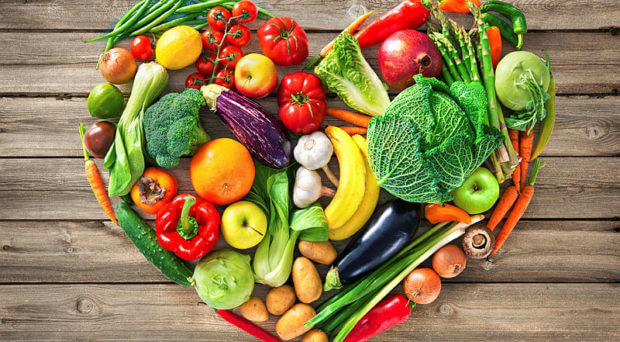With 100 years of whipping up delicious recipes in the Better Homes & Gardens Test Kitchen, there are quite a few handy tricks to master cooking skills.

With a century’s worth of testing recipes for Better Homes & Gardens® magazine, cookbooks, and countless other special publications, our Test Kitchen has more than a few tricks under its belt. With valuable knowledge on all things cooking and baking, the BHG Test Kitchen pros taught us the best way to hard-cook eggs, safe ways to dispose of cooking oil, last-minute baking substitutions, and so much more. As we celebrate 100 years, I sought to find the ultimate list of Test Kitchen tips from our seasoned culinary experts for home-cooking success. Go ahead and bookmark this page now—you’re going to reference these cooking tips often.
Baking Tips
Whether you’re trying to line a baking pan or not sure how to properly flour a surface, these are some great baking tips from the Test Kitchen to keep in mind.
01of 14
1. Cake Saver
:max_bytes(150000):strip_icc():format(webp)/yellow-cake-chocolate-butter-R165764-928ae5a6167b4d92a1af0fe41c52d328.jpg)
Cake a little dry? Brush it with a little flavored syrup (like the kind you put in your latte) or flavored liqueur, such as Grand Marnier or amaretto.
02of 14
2. Pan Lining
To quickly cut circles of waxed or parchment paper for lining pans, fold a large circle of paper into eighths. Place the point in the center of the pan and cut a semicircle along the perimeter of the pan. Unfold and flatten the paper—and you have a right-size circle of paper ready to go.
03of 14
3. Meringue Keeper
:max_bytes(150000):strip_icc():format(webp)/caramel-meringue-pie-2445f928-35e50b3b3c1a4c7bb51ba0e955736b34.jpg)
Make This Caramel Meringue Pie
Help prevent meringues from weeping by adding 1 teaspoon of cornstarch with the sugar when beating your eggs whites.
04of 14
4. Flour Dusting
Fill a small fine-mesh sieve with 1 to 2 tablespoons of flour. Keep it handy as you knead, roll, and cut doughs for pastry, cookies, noodles, and more. This allows for a light, even dusting of flour without overflouring the dough—causing it to be dry and touch.
05of 14
5. Fresh Bread
:max_bytes(150000):strip_icc():format(webp)/RU317429-7d31c3dea94642f78a5d5b739d05d8b5.jpg)
European-style yeast breads generally don’t last much beyond the day they’re baked because they contain no fats to stabilize them and keep them moist. Refresh a day-old loaf by spritzing it with water and warming it in a 375ºF oven for 8 to 10 minutes. It will once again have a crisp crust and soft, chewy interior. Eat the bread immediately for best results, and don’t use the trick on the same loaf more than once.
Kitchen Tips
The expert cooks in the Test Kitchen pick up a lot of cool tricks along the way. Add these helpful everyday cooking secrets to your daily routine.
06of 14
6. Mise en Place
:max_bytes(150000):strip_icc():format(webp)/baking-cooking-ingredients-ABdt0mTLqDDAK52b4qGl2t-2273642ba7c141d08d5b29da6a7983a5.jpg)
French for “put in place” or “gather,” mise en place is setting out all of your ingredients and equipment before beginning a recipe. This ensures you have everything you will need. Oh, and read through the entire recipe before you start.
07of 14
7. Keep the Oven Closed
Avoid opening the oven door during baking and roasting. Each time you open the oven door, you can easily lose 50ºF to 100°F heat, which will prolong your baking time.
08of 14
8. Fresh Produce
:max_bytes(150000):strip_icc():format(webp)/RU308470-96a6f057f532473b9cd003d7d6a4aabe.jpg)
Knowing where to store produce is key to making them last (and taste fresher) longer. Store tomatoes at room temperature. Cool temperatures can cause them to become mealy. Once fully ripened, you can refrigerate them if you like eating cold tomatoes in salads, etc.
09of 14
9. Egg Rescue
Oops! A piece of shell broke into the bowl of eggs. Instead of making a mess trying to get it out with your hands, use one half of a clean eggshell to scoop it out.
Tool Tips
Whether you don’t have a rolling pin or want a better way to make biscuits, these Test Kitchen tips will best use your kitchen tools.
10of 14
10. Better Butter
:max_bytes(150000):strip_icc():format(webp)/101683393-R090754-10d70dbed35442a4833cdb2ea458835a.jpg)
If a recipe such as piecrust or biscuits calls for cutting-in butter, freeze it and use a cheese grater to shred it into the flour for the easiest results.
11of 14
11. Sticky Liquid Measuring
Spray measuring cups/spoons with a little nonstick spray before measuring sticky or greasy ingredients (i.e. honey, corn syrup, or solid shortening). Watch and be amazed by the easy release into the bowl.
12of 14
12. Skillet Skills
:max_bytes(150000):strip_icc():format(webp)/R0996971-e0f31811eb204cbfa0cec1f46803b202.jpg)
Try the Chicken Skillet Dinner
Always let your skillet heat up first. If you add the food before the skillet is hot, it will steam rather than brown, and it will still take the same amount of time to get hot and start cooking. It’s hot when a few drops of water sizzle and dance on the pan. Now add the oil and let it heat up (just a few more seconds). It’s hot when the reflection of the light shimmers. One exception: Add bacon to a cold skillet and put on the heat. Now it won’t curl up right away and will cook evenly as the skillet heats up.
13of 14
13. Roll It Out
Find yourself without a rolling pin? If there’s a wine bottle around, use it to roll out any dough—biscuit, pizza, cookie, or piecrust. It cleans up easily when you’re done—and you can celebrate your genius with a toast.
